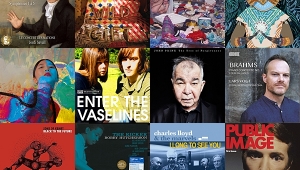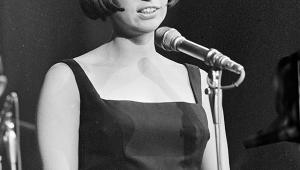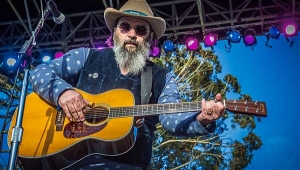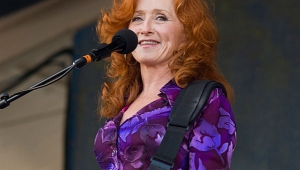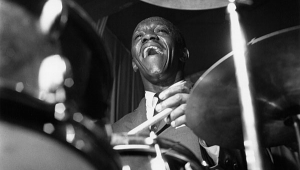| Columns Retired Columns & Blogs |
The Survivalists: Mosaic and Newvelle Records

One is a well-established reissue label, known the world over for its completist black boxes filled with beautifully remastered jazz recordings from the 1930s through the 1960s.
The other is a new label that records only new jazz, released in elaborate packages that include a poem and original artwork, not to mention transparent 180gm pressings, tying into the newly fashionable idea of a vinyl lifestyle.
In both cases, hope truly springs eternal. While the larger music business continues to be roiled by changing formats and the impact of streaming, the old and the new labels, Mosaic Records and Newvelle Records, continue to exist, even prosper. Mosaic has hit a new high with the release of Classic 1936–1947 Count Basie and Lester Young Studio Sessions, the first Prez collection to be cross-licensed between the material owned by Sony and Universal Music, and Newvelle has successfully entered its second year of subscription sales.
Mosaic
A longtime favorite of both jazz fans and audiophiles, Mosaic Records, based in Stamford, Connecticut, has been the object of some concern in recent years. There were ever-longer gaps between releases, and if the traffic in my Stereophile e-mail inbox was any indication, readers worried that Mosaic was fading away.
"There were a few fallow periods along the way," admits Michael Cuscuna, who founded Mosaic in 1983 with Charlie Lourie, then director of marketing for Blue Note Records. "In the '90s, when the Robert Johnson set came out on Columbia and it really took off, the majors were all suddenly thinking, 'Oh, boxed sets sell—so maybe we shouldn't license out stuff.' For a long while, it was hard to get material. Then there are other times when the economy shrinks. And then weird, random stuff. I mean, at one point Australia used to be maybe 15% of our business, and then the Australian dollar tanked and it all disappeared. So that was kind of a rough spot."
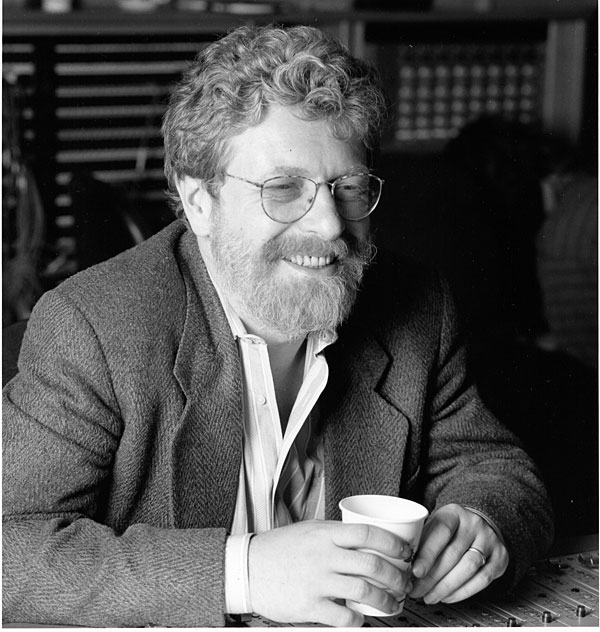
A lifelong jazz fan who was raised in Connecticut and educated at the University of Pennsylvania, Cuscuna worked as a radio deejay and concert promoter in Philadelphia and New York before becoming a freelance producer of jazz and pop records, for Atlantic, Blue Note, Columbia, and other labels. He also wrote about music, for The New York Times, Rolling Stone, Down Beat, and Record World. Beginning in 1979, when Down Beat added the category of Producer of the Year to its annual Critics' Poll, Cuscuna won it three years running. He's won Grammies for Best Historical Album—in 1992 for The Complete Capitol Recordings of the Nat King Cole Trio (Mosaic), and in 2001 for Lady Day: The Complete Billie Holiday on Columbia 1933–1944 (Columbia)—and, in 1988, for Best Liner Notes, for The Complete Columbia Studio Recordings of the Miles Davis Quintet 1965–1968 (Columbia/Mosaic). In 1982, Cuscuna and Lourie developed a plan to reactivate the inactive Blue Note label, whose catalog was then owned by Capitol/EMI.
"One night I was just sitting around with a bottle of wine and noodling with numbers, and I called Charlie at midnight and said, 'You know, this whole boxed thing could be a business unto itself. I think we have a business . . . that would really appeal to our senses—doing something that was complete and definitive, and going back and re-upping the quality of the sound, and documenting it in fact-rich booklets with research and photos and all that stuff.' It just suited our mentalities, and after Capitol turned us down, that's what happened."
Among the very first Mosaic sets to be issued were The Complete Pacific Jazz Recordings of the Gerry Mulligan Quartet with Chet Baker, The Complete Blue Note Recordings of Albert Ammons and Meade Lux Lewis, and The Complete Blue Note Recordings of Thelonious Monk.
"What I wanted to do was, basically, put out records without being in the record business," Cuscuna says. "I knew I wanted to avoid distributors and retail, because of returns that would get battered and have to be scrapped and because of unpaid invoices. To make a boxed-set thing work it had to be direct mail, full price goes to us, and inventory very cautiously controlled by us; otherwise, we would have been outta business in the first year. If we made a limited edition of 5000 and it would sell out in two years, we'd make 5000 times $70, or whatever, and we thought that would be great. Well, no—it ended up where we used our savings and credit cards, and we didn't take a salary for about three-and-a-half years, but we kept it going because we knew it would catch on. It's just that it built slower than we expected."
The Mosaic sets released now number over 200, and fetch increasingly steep prices on the secondary market. The sources of the recordings have always been the major record labels. Remastering engineer Andreas Meyer has been with the company from the start, using metal parts, lacquers, tapes, and, if all else fails, original 78rpm discs in the best condition possible. And from the start Mosaic has tempted fate and the wrath of jazz fanatics—who revel in detail as do fans of no other genre—by labeling many of their boxes "Complete." But before I even ask the question, Cuscuna chuckles.
"In the beginning, we wanted every set to be absolutely perfect, and when it wasn't, we got very deflated about it. In the early days it broke my heart, but as time wears on you realize that there are things floating around, and that there are discographical errors you may not catch and correct. But you're human, and the process is varied, and it involves a lot of people and a lot of sources, and it will happen. There will always be someone who has an alternate take that we didn't find out about. Or we couldn't find any source but a cracked 78, and someone will eventually say, 'Oh, I have a mint 78.' But how do you reach out to those people without knowing who they are? You can't. That's life. If we get 99% of the way, we're happy."
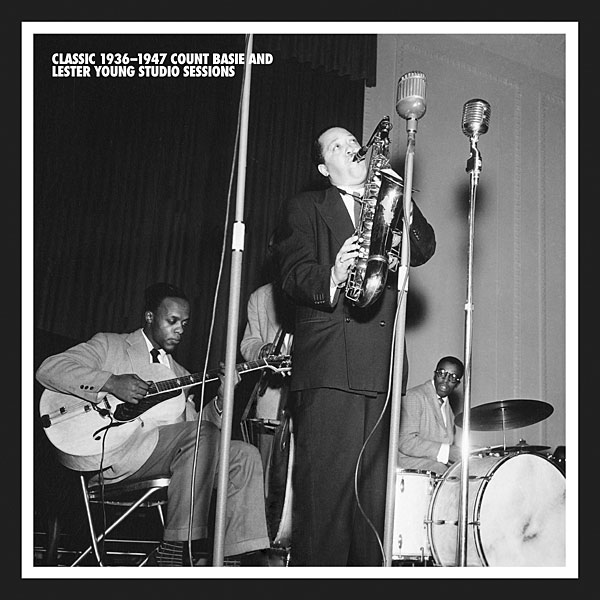
In the beginning, Mosaic sets were LP only. Then, in the mid-'80s, they began simultaneously issuing sets on CD and LP, a practice that continued until 1997; The Complete Blue Note Horace Parlan Sessions was the last to be issued in both formats.
"I looked at what was wrong with putting out LP counterparts to CD sets, and if you have a six-CD set, you're looking at a nine- or ten-LP set. And nine or ten 180gm LPs are heavy and expensive, and so we realized that counterparts didn't work. But when the whole LP thing started to groundswell again, what we did was we created a series of LPs that had nothing to do with our CD sets. They had concepts unto themselves. And they were consciously chosen as sets that would be three to five LPs, which would make it manageable and affordable, and so that's what we've been doing. We have seven- or eight-LP sets out now, and there will be more."
The biggest-selling Mosaic LP boxes so far have been The Complete Capitol Recordings of the Nat King Cole Trio, The Complete Recordings of T-Bone Walker 1940–1954, The Complete Blue Note Recordings of Thelonious Monk, and The Complete Verve Gerry Mulligan Concert Band Sessions. Typically, Mosaic negotiates reissue licenses with major labels reissue licenses defined by both time and sales numbers; usually, the first condition to expire is how long Mosaic can possess, reproduce, and sell the recordings. Sometimes, extensions are granted. Cuscuna says, with more than a hint of sarcasm, that it took until 1989 for the major labels to grant Mosaic the right to press CDs, because "they were new and were saving the business."
He's now facing the same predicament with MP3s and high-resolution downloads. "The majors will never give us rights to downloads. It's their feeling that they can take a Mosaic set and dump the CDs into iTunes and put up the downloads for themselves. As long as they don't use the Mosaic name or box it like the Mosaic, they can do whatever they want—it's their material."
While digital technology is a godsend for rescuing old or compromised source material, the future of CDs is another matter. Does Cuscuna plan to keep releasing massive CD sets like the eight-CD Classic 1936–1947 Count Basie and Lester Young Studio Sessions? "I think CDs will continue, and will be the last physical way to transport music, to disseminate music. I don't think that our generation is going to get beyond the CD. And when the CD goes, I don't think I'll be around—it will last as long as I do.
- Log in or register to post comments
